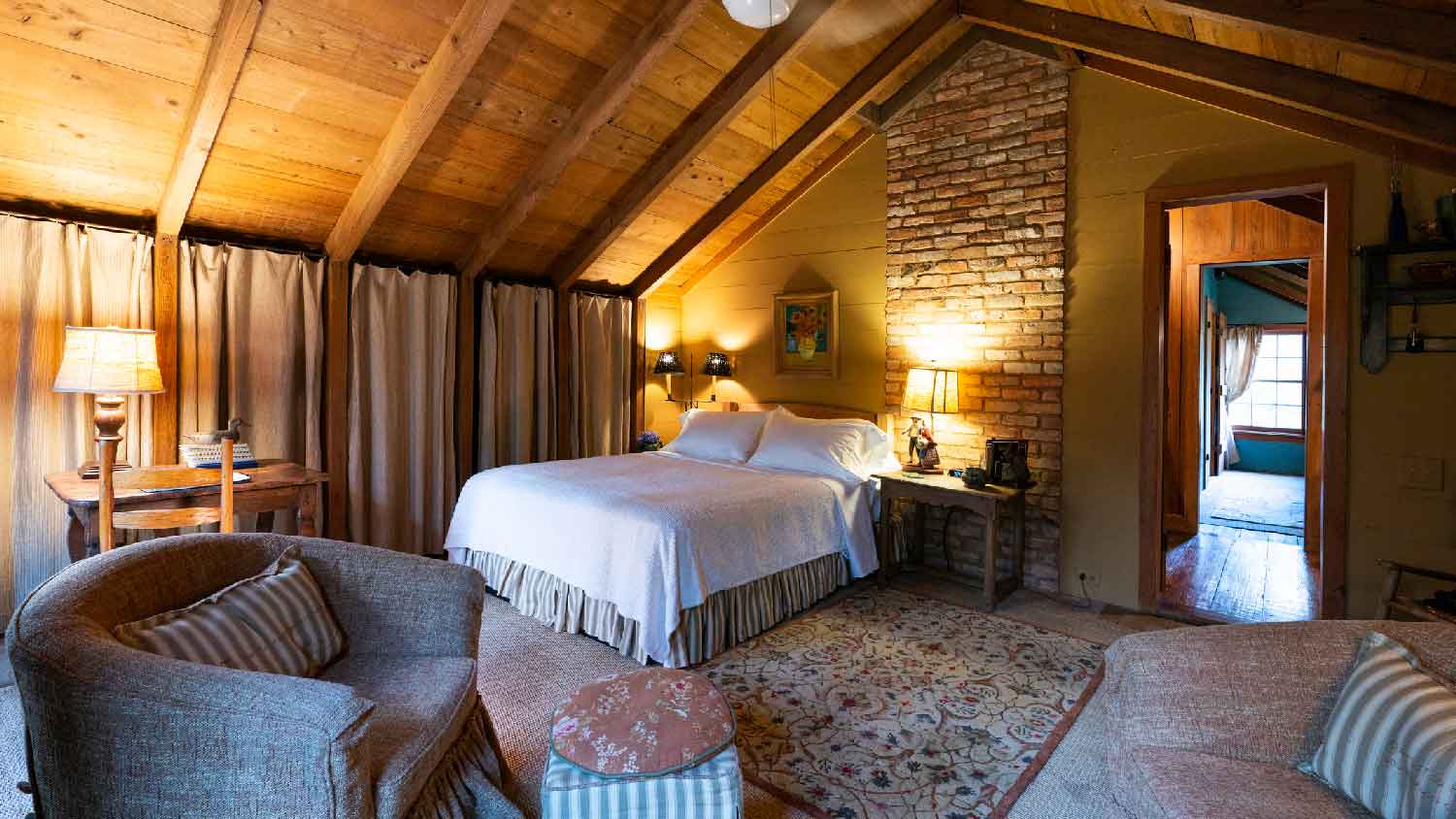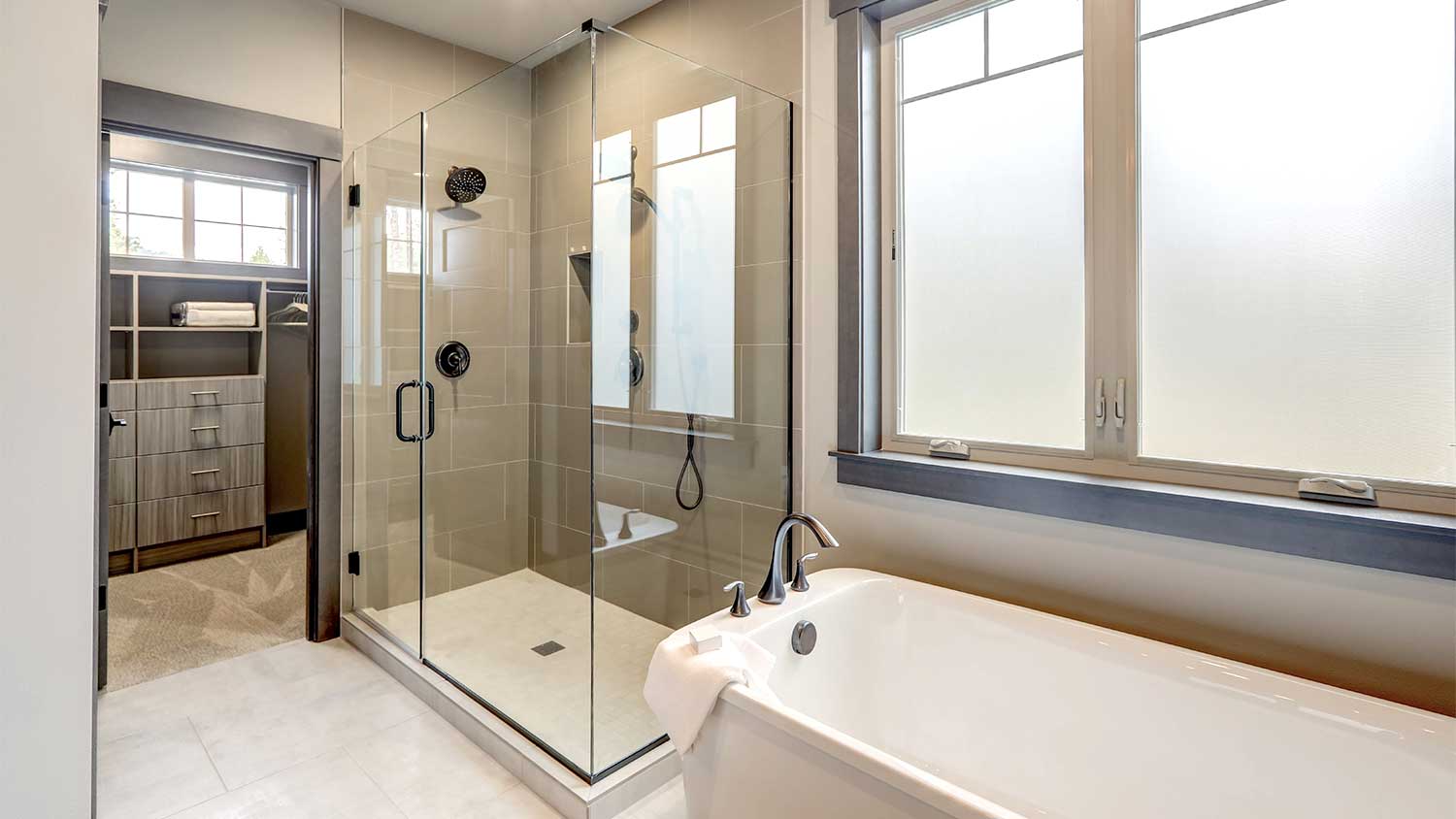
How much does a kitchen remodel cost? Find out the average cost and where you can save money on the path to building your ideal cooking space.
Win back space in your abode by giving guests their own


Guest houses can be attached to or detached from your main home.
You can convert an in-house area to a guest house—think garages and basements.
They include plumbing, electricity, heating, and a place for cooking and sleeping.
If you've decided to open up your house to outsiders, whether that be family, friends, or potential paying guests, your home will quickly start to feel packed if you don't have a dedicated space. Guest houses allow you to keep your domain just how you like it while also giving long- and short-term visitors a place to feel at home.
But what is a guest house exactly? This type of home addition covers a wide array of potential new builds, including attached, detached, and converted spaces. Get to know the different types of guest houses, including their amenities and all the options for high and low budgets.
A guest house is a secondary space to a main property that includes all the essentials for daily life—like a small kitchen, bathroom, and place to sit and sleep. These home additions can be new constructions attached directly to a home, freestanding structures on the same lot, or converted, pre-existing spaces like basements or garages. Similarly, they can have separate entrances or access only through the main building.
Lots of additional builds fall into the guest house category, like carriage houses. Which one you opt for will depend on factors like the size of your property, if you have any space to convert, your local zoning rules, and how much you’re willing to spend.

Guest houses and accessory dwelling units (ADUs) both feature all of the bare necessities for living comfortably—like plumbing, electricity, and a space to cook and sleep. Both can exist in detached, attached, or converted spaces. What makes an ADU different is that its primary purpose isn’t necessarily to host a variety of people who come and go. ADUs are more likely to be built for long-term residents, like family members or renters. Some homeowners also choose ADUs to create more personal living space for themselves, as a place to work, or allow their immediate family members to spread out and have privacy.
The three main types of guest houses are detached, attached, and converted spaces, though some specific options exist under these umbrellas, like in-law suites.
Built away from the primary structure, these guest houses include everything from pool houses, prefabricated tiny homes, and converted detached units that were already in place, like a shed or carriage house. Unlike attached structures, you’ll be able to access them through their own entry points rather than needing to enter through the main home, making them ideal for potential renters or guests from vacation booking sites.
These guest houses primarily consist of new builds attached directly to an existing structure. They can have their own private entrances, but they are more often than not only accessed through the main house. They’re a good pick for long-term guests or family members who’ve moved in full-time—like aging parents—but still want a place they can make their own.
Have a space that goes largely unused, like a garage, basement, or attic? Any and all of these rooms are prime candidates for converting into a guest house. This type of home addition is the most affordable of the lot since it doesn’t involve any demolition or construction, and it’s easier, too, since it’s less likely to be roadblocked by zoning laws.
There is some demand in the market for ADU's, specifically in-law suites. Most of this is driven by new homebuyers looking for ways to help pay their mortgage by renting space without having to qualify for an additional loan to purchase a separate investment property. This has increased as mortgage rates have continued to increase and homebuyers look for ways to save.
The following five features must be included in a new home addition for it to be technically considered a guest house.
A guest house always needs plumbing. Being able to wash up dishes, go to the bathroom, and take a hot shower are absolute musts for any guest.
Another bare minimum in a guest house is that the lights turn on. There should also be plenty of electrical outlets for plugging in all of the necessities for comfortable living, from a fridge to a TV.
Even if you’re equipping your guest house kitchen with an electric or induction cooktop, it’ll need a gas line for heating the house in the colder months and providing hot showers year round.
One bedroom is not enough to earn a home addition the title of a guest house. There should also be a space for your visitors to get cozy outside of the confines of the bed. It doesn’t have to be a completely separate room, but a division between the living and sleeping areas is ideal.
If there’s nowhere to sleep in a guest house, it’s safe to say the people staying there won’t be comfortable. Depending on space limitations, a full bedroom setup may not be possible, but space-saving hacks like opting for a Murphy bed or a couch sofa will give your visitors everything they need.
The cost of building a new guest house depends on which type you choose. For instance, converting a garage ranges from $20,000 to $60,000 because it doesn’t require any new construction. However, building a new detached unit can cost anywhere from $40,000 to $125,000.
You may be able to save on some of those costs by DIYing certain aspects, like installing drywall or painting. However, building a guest house is a complex construction project that requires permits and knowledge of plumbing, electrical, and HVAC work. Your best bet is to hire a home addition contractor near you to take care of everything instead. The good news? Guest houses can increase your home value overall. Every 1,000 square feet added will boost it by 30%.
From average costs to expert advice, get all the answers you need to get your job done.

How much does a kitchen remodel cost? Find out the average cost and where you can save money on the path to building your ideal cooking space.

Knowing how much it costs to renovate a house will help you plan and budget appropriately. Use this guide to get a rough estimate for your project.

Thinking of getting rid of that old bathtub and replacing it with a walk-in shower? This walk-in shower cost guide will help you plan your budget.

Is it worth converting a half bath to a full bath? It depends on the number of bathrooms already in your home. This guide can help you figure out the real ROI.

A Jack and Jill bathroom is a great way to maximize space while maintaining privacy. Find out more using this informative guide.

Discover the average bus conversion cost, including key price factors, to help you plan your project and budget confidently for your dream bus home.